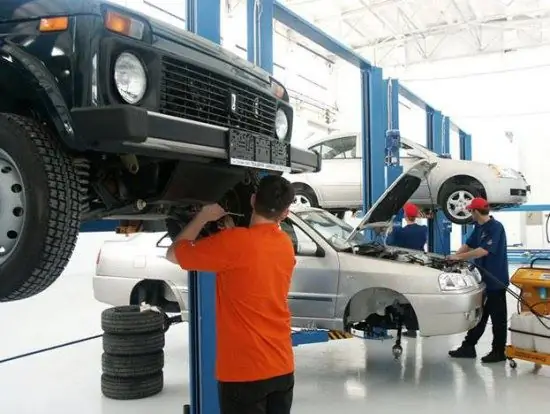- Author Maria Gibbs [email protected].
- Public 2023-12-16 03:05.
- Last modified 2025-01-22 17:48.
With the advent of the car, one of the main problems was the increase in engine power. As you know, this is influenced by the amount of fuel burned during the operating cycle, which, in turn, depends on the amount of air entering the combustion chamber to form a fuel-air mixture.

Instructions
Step 1
An increase in the size of the combustion chamber will ultimately lead to an increase in power, but also an increase in fuel consumption and engine size. A revolutionary idea in increasing engine power was put forward back in 1885 by the founder of the future automobile empire, Gottlieb Wilhelm Daimler, who proposed supplying pressurized air to the cylinders using a compressor powered by the engine shaft. His idea was taken up and refined by Alfred Büchi, a Swiss engineer who patented a device for injecting air from exhaust gases, which formed the basis for all modern turbocharging systems.
Step 2
The turbocharger consists of two parts - a rotor and a compressor. The rotor is driven by the exhaust gases and, through a common shaft, starts the compressor, which compresses the air and supplies it to the combustion chamber. To increase the amount of air entering the cylinders, it must be additionally cooled, since it is easier to compress when cooled. To do this, use an intercooler or intercooler, which is a radiator mounted in the duct between the compressor and the cylinders. At the moment of passing through the radiator, the heated air gives off its heat to the atmosphere, while the colder and denser air enters the cylinders in greater quantities. The greater the amount of exhaust gases entering the turbine corresponds to a higher rotation speed and, naturally, a larger volume of air entering the cylinders, which increases the engine power. The effectiveness of such a scheme is confirmed by the fact that only 1.5% of the total engine energy is required for the boost operation.
Step 3
Recently, cars have begun to use a sequential supercharging scheme, in which a small, low-inertia turbocharger is started at low speeds, and already at high speeds, a second, more powerful turbocharger is switched on. This scheme avoids the turbo lag effect.






